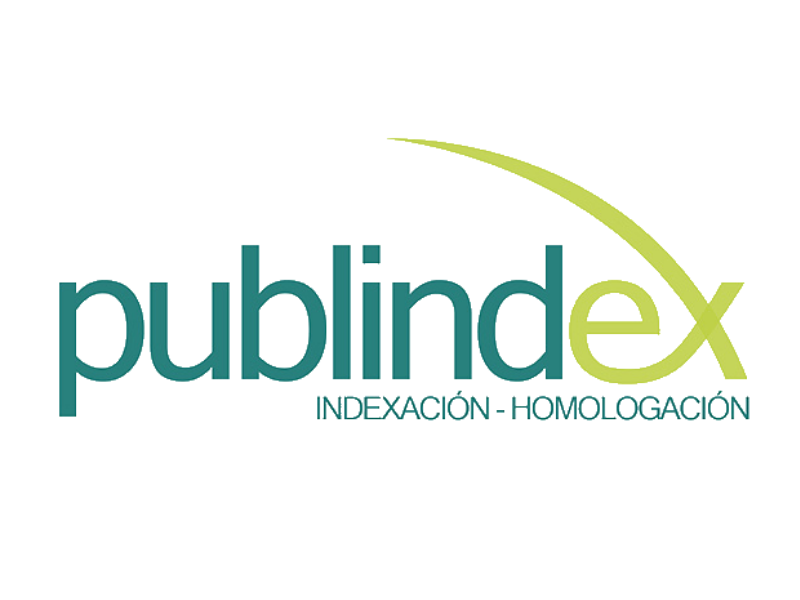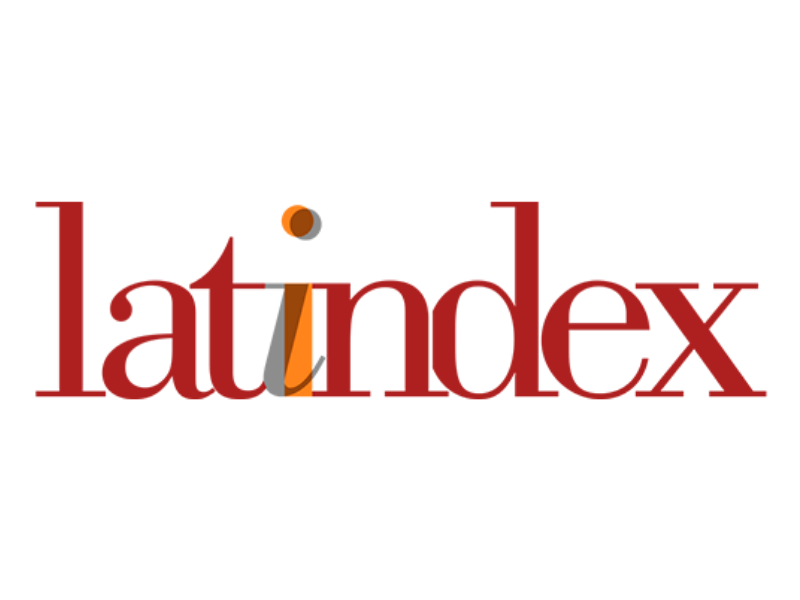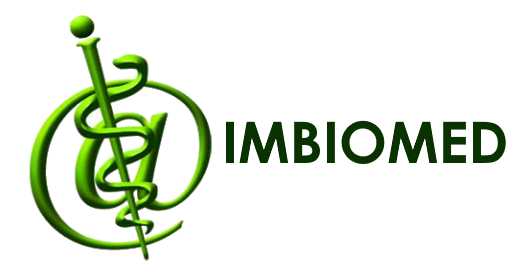Comportamiento mitocondrial en enfermedades cardíacas
Mitochondrial behavior in cardiovascular diseases
Esta obra está bajo una licencia internacional Creative Commons Atribución-NoComercial-CompartirIgual 4.0.
Mostrar biografía de los autores
Introducción: las mitocondrias, cruciales para la producción de ATP, están vinculadas con enfermedades cardíacas que son las principales causas de muerte a nivel global. Objetivo: describir el comportamiento mitocondrial en enfermedades del corazón. Discusión: la disfunción mitocondrial varía en diferentes condiciones: en isquemia/reperfusión, se afecta la producción de ATP y se incrementa el estrés oxidativo; en insuficiencia cardíaca se reduce la eficiencia de la fosforilación oxidativa exacerbando la insuficiencia energética; en valvulopatías, los cambios en la homeostasis mitocondrial afectan la función valvular; y en arritmias la disfunción mitocondrial se asocia con desequilibrios iónicos y alteraciones en la señalización intracelular. Conclusión: las enfermedades cardíacas comparten similitudes en alteraciones bioenergéticas y moleculares, subrayando la importancia de comprender el papel de las mitocondrias en este contexto.
Visitas del artículo 253 | Visitas PDF 58
Descargas
- Peoples JN, Saraf A, Ghazal N, Pham TT, Kwong JQ. Mitochondrial dysfunction and oxidative stress in heart disease. Exp Mol Med. 2019;51(12):1-13. https://doi.org/10.1038/s12276-019-0355-7
- Li Y, Ma Y, Dang QY, Fan XR, Han CT, Xu SZ, et al. Assessment of mitochondrial dysfunction and implications in cardiovascular disorders. Life Sci. 2022;306:120834. https://doi.org/10.1016/j.lfs.2022.120834
- Organización Panamericana de la Salud, Organización Mundial de la Salud. Las enfermedades del corazón siguen siendo la principal causa de muerte en las Américas [Internet]. Organización Panamericana de la Salud; 2021. Disponible en: https://www.paho.org/es/noticias/29-9-2021-enfermedades-corazon-siguen-siendo-principal-causa-muerte-americas
- Noreña-Buitrón LD, Estela-Zape JL. Systemic Compensatory Mechanisms in Patients with Persistent Truncus Arteriosus. Rev Investig Innov Cienc Salud. 2024;6(2):248-261. https://doi.org/10.46634/riics.256
- Hernandez-Resendiz S, Prunier F, Girao H, Dorn G, Hausenloy DJ; EU-CARDIOPROTECTION COST Action (CA16225). Targeting mitochondrial fusion and fission proteins for cardioprotection. J Cell Mol Med. 2020;24(12):6571-6585. https://doi.org/10.1111/jcmm.15384
- Wu S, Zou MH. AMPK, Mitochondrial Function, and Cardiovascular Disease. Int J Mol Sci. 2020;21(14):4987. https://doi.org/10.3390/ijms21144987
- Da Dalt L, Cabodevilla AG, Goldberg IJ, Norata GD. Cardiac lipid metabolism, mitochondrial function, and heart failure. Cardiovasc Res. 2023;119(10):1905-1914. https://doi.org/10.1093/cvr/cvad100
- López-Hidalgo M, Eblen-Zajjur A. Isquemia miocárdica con coronarias de aspecto angiográfico normal. Enfoque diagnóstico. Investigación clínica. 2020;61(4):376-392. https://doi.org/10.22209/IC.v61n4a06
- Mui D, Zhang Y. Mitochondrial scenario: roles of mitochondrial dynamics in acute myocardial ischemia/reperfusion injury. J Recept Signal Transduct Res. 2021;41(1):1-5. https://doi.org/10.1080/10799893.2020.1784938
- Ramachandra CJA, Hernandez-Resendiz S, Crespo-Avilan GE, Lin YH, Hausenloy DJ. Mitochondria in acute myocardial infarction and cardioprotection. EBioMedicine. 2020;57:102884. https://doi.org/10.1016/j.ebiom.2020.102884
- Wu L, Wang L, Du Y, Zhang Y, Ren J. Mitochondrial quality control mechanisms as therapeutic targets in doxorubicin-induced cardiotoxicity. Trends Pharmacol Sci. 2023;44(1):34-49. https://doi.org/10.1016/j.tips.2022.10.003
- Chen Q, Thompson J, Hu Y, Lesnefsky EJ. Reversing mitochondrial defects in aged hearts: role of mitochondrial calpain activation. Am J Physiol Cell Physiol. 2022;322(2):C296-C310. https://doi.org/10.1152/ajpcell.00279.2021
- Zhou M, Yu Y, Luo X, Wang J, Lan X, Liu P, et al. Myocardial Ischemia-Reperfusion Injury: Therapeutics from a Mitochondria-Centric Perspective. Cardiology. 2021;146(6):781-792. https://doi.org/10.1159/000518879
- Kim DS, Oyunbaatar NE, Shanmugasundaram A, Jeong YJ, Park J, Lee DW. Stress induced self-rollable smart-stent-based U-health platform for in-stent restenosis monitoring. Analyst. 2022;147(21):4793-4803.
- Davidson SM, Adameová A, Barile L, Cabrera-Fuentes HA, Lazou A, Pagliaro P, et al. Mitochondrial and mitochondrial-independent pathways of myocardial cell death during ischaemia and reperfusion injury. J Cell Mol Med. 2020;24(7):3795-3806. https://doi.org/10.1111/jcmm.15127
- Heidenreich PA, Bozkurt B, Aguilar D, Allen LA, Byun JJ, Colvin MM, et al. 2022 AHA/ACC/HFSA Guideline for the Management of Heart Failure: A Report of the American College of Cardiology/American Heart Association Joint Committee on Clinical Practice Guidelines. Journal of the American College of Cardiology. 2022;79(17)e263-e421. https://doi.org/10.1161/CIR.0000000000001063
- Ho MY, Wang CY. Role of Irisin in Myocardial Infarction, Heart Failure, and Cardiac Hypertrophy. Cells. 2021;10(8):2103. https://doi.org/10.3390/cells10082103
- Zhihao L, Jingyu N, Lan L, Michael S, Rui G, Xiyun B, et al. SERCA2a: a key protein in the Ca2+ cycle of the heart failure. Heart Fail Rev. 2020;25(3):523-535. https://doi.org/10.1007/s10741-019-09873-3
- Yang D, Liu HQ, Liu FY, Guo Z, An P, Wang MY, et al. Mitochondria in Pathological Cardiac Hypertrophy Research and Therapy. Front Cardiovasc Med. 2022;8:822969. https://doi.org/10.3389/fcvm.2021.822969
- Gao HL, Yu XJ, Hu HB, Yang QW, Liu KL, Chen YM, et al. Apigenin Improves Hypertension and Cardiac Hypertrophy Through Modulating NADPH Oxidase-Dependent ROS Generation and Cytokines in Hypothalamic Paraventricular Nucleus. Cardiovasc Toxicol. 2021;21(9):721-736. https://doi.org/10.1007/s12012-021-09662-1
- Ni Y, Deng J, Bai H, Liu C, Liu X, Wang X. CaMKII inhibitor KN-93 impaired angiogenesis and aggravated cardiac remodelling and heart failure via inhibiting NOX2/mtROS/p-VEGFR2 and STAT3 pathways. J Cell Mol Med. 2022;26(2):312-325. https://doi.org/10.1111/jcmm.17081
- Luan Y, Jin Y, Zhang P, Li H, Yang Y. Mitochondria-associated endoplasmic reticulum membranes and cardiac hypertrophy: Molecular mechanisms and therapeutic targets. Front Cardiovasc Med. 2022;9:1015722. https://doi.org/10.3389/fcvm.2022.1015722
- Arrigo M, Jessup M, Mullens W, Reza N, Shah AM, Sliwa K, Mebazaa A. Acute heart failure. Nat Rev Dis Primers. 2020;6(1):16. https://doi.org/10.1038/s41572-020-0151-7
- Olmos C, San Román JA, Sitges M, Forteza A, Rodríguez JF, Castillo FJ, et al. Selección de lo mejor del año 2021 en valvulopatías. CardioClinics. 2022;57(s1):S48-S53.
- Arciniega AL, Prieto JS, Mora LM, Córdoba N. Valvulopatías y Covid 19. Scientific & Education Medical Journal. 2022;6(2):03-114.
- Morciano G, Patergnani S, Pedriali G, Cimaglia P, Mikus E, Calvi S, et al. Impairment of mitophagy and autophagy accompanies calcific aortic valve stenosis favouring cell death and the severity of disease. Cardiovasc Res. 2022;118(11):2548–2559. https://doi.org/10.1093/cvr/cvab267
- Greenberg HZE, Zhao G, Shah AM, Zhang M. Role of oxidative stress in calcific aortic valve disease and its therapeutic implications. Cardiovasc Res. 2022;118(6):1433-1451. https://doi.org/10.1093/cvr/cvab142
- Carracedo M, Persson O, Saliba-Gustafsson P, Artiach G, Ehrenborg E, Eriksson P, et al. Upregulated Autophagy in Calcific Aortic Valve Stenosis Confers Protection of Valvular Interstitial Cells. International journal of molecular sciences. 2019;20(6):1486. https://doi.org/10.3390/ijms20061486
- Henry GE, Ducuara-Tovar CH, Duany-Diaz T, Valdés-Martín A, Gonzalez-Gonzalez L, López-Pineiro Y. Estenosis Valvular Aortica. Revista Cubana de Cardiología y Cirugía Cardiovascular. 2018;24(1).
- Lkhagva B, Lee TW, Lin YK, Chen YC, Chung CC, Higa S, et al. Disturbed Cardiac Metabolism Triggers Atrial Arrhythmogenesis in Diabetes Mellitus: Energy Substrate Alternate as a Potential Therapeutic Intervention. Cells. 2022;11(18):2915. https://doi.org/10.3390/cells11182915
- Cascos E, Sitges M. Insuficiencia mitral: magnitud del problema y opciones de mejora. Cirugía Cardiovascular. 2022;29:S26-S31. https://doi.org/10.1016/j.circv.2022.02.003
- Corporan D, Segura A, Padala M. Ultrastructural Adaptation of the Cardiomyocyte to Chronic Mitral Regurgitation. Front Cardiovasc Med. 2021;8:714774. https://doi.org/10.3389/fcvm.2021.714774
- Kanaan GN, Patten DA, Redpath CJ, Harper ME. Atrial Fibrillation Is Associated With Impaired Atrial Mitochondrial Energetics and Supercomplex Formation in Adults With Type 2 Diabetes. Can J Diabetes. 2019;43(1):67-75.e1. https://doi.org/10.1016/j.jcjd.2018.05.007
- Huizar JF, Ellenbogen KA, Tan AY, Kaszala K. Arrhythmia-Induced Cardiomyopathy: JACC State-of-the-Art Review. J Am Coll Cardiol. 2019;73(18):2328-2344. https://doi.org/10.1016/j.jacc.2019.02.045
- Gambardella J, Sorriento D, Ciccarelli M, Del Giudice C, Fiordelisi A, Napolitano L, et al. Functional Role of Mitochondria in Arrhythmogenesis. Adv Exp Med Biol. 2017;982:191-202. https://doi.org/10.1007/978-3-319-55330-6_10
- Hamilton S, Terentyeva R, Clements RT, Belevych AE, Terentyev D. Sarcoplasmic reticulum-mitochondria communication; implications for cardiac arrhythmia. J Mol Cell Cardiol. 2021;156:105-113. https://doi.org/10.1016/j.yjmcc.2021.04.002
- Mason FE, Pronto JRD, Alhussini K, Maack C, Voigt N. Cellular and mitochondrial mechanisms of atrial fibrillation. Basic Res Cardiol. 2020;115(6):72. https://doi.org/10.1007/s00395-020-00827-7
- Pool L, Wijdeveld LFJM, de Groot NMS, Brundel BJJM. The Role of Mitochondrial Dysfunction in Atrial Fibrillation: Translation to Druggable Target and Biomarker Discovery. International Journal of Molecular Sciences. 2021;22(16):8463. https://doi.org/10.3390/ijms22168463
- Pfeffer MA, Shah AM, Borlaug BA. Heart Failure With Preserved Ejection Fraction In Perspective. Circ Res. 2019;124(11):1598-1617. https://doi.org/10.1161/CIRCRESAHA.119.313572
- Salvador-Casabón JM, Grados-Saso D, Lacambra-Blasco I, Giménez-López I, Pérez-Calvo JI. Prognostic value of early reassessment of reduced ejection fraction in acute heart failure. Rev Clin Esp (Barc). 2022;S2254-8874(22):00106-0. https://doi.org/10.1016/j.rceng.2022.10.006
- Dobson LE, Prendergast BD. Heart valve disease: a journey of discovery. Heart. 2022;108(10):774-779. https://doi.org/10.1136/heartjnl-2021-320146
- Dridi H, Kushnir A, Zalk R, Yuan Q, Melville Z, Marks AR. Intracellular calcium leak in heart failure and atrial fibrillation: a unifying mechanism and therapeutic target. Nat Rev Cardiol. 2020;17(11):732-747. https://doi.org/10.1038/s41569-020-0394-8
- Han B, Trew ML, Zgierski-Johnston CM. Cardiac Conduction Velocity, Remodeling and Arrhythmogenesis. Cells. 2021;10(11):2923. https://doi.org/10.3390/cells10112923












